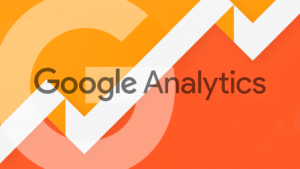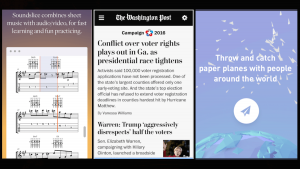(August 06, 2015), we took a closer look at Adweek’s “Here are 13 Hot Digital Marketing Stats from the Past Week, and tried to break down what these numbers really mean. Today, we’ll continue that endeavor, with Stats #8-13:
[In case you missed Part 1, the article can be found here]
8. Tech vendor Undertone conducted an online survey of 3,600 U.S. adults ages 18 to 64 to suss out differences between desktop and mobile in terms of ad recall. When people were asked if they remembered seeing full-page ads, 38% recalled seeing the ad on a desktop. 43% of those who were served the ad on smartphones, tablets and desktops remembered the ad.
While videos displayed on smartphones and tablets are (literally) smaller in size, they appear to make an even bigger impact. At first glance, this may seem somewhat counter-intuitive; but, upon further inspection, it’s likely due to a couple of factors:
1. Familiarity: although many of us might spend several hours a day on a desktop, our mobile devices—like modern day, digital security blankets—are never far from our side. As a result, and also because we associate their use with fun (and not work) there’s a certain intimacy that comes from that relationship. In a sense, seeing an ad on a desktop versus seeing one on a mobile device is almost like the difference between receiving information from a co-worker or from a friend. Remember: messaging is not just about what is said, but also very much about who says it.
2. Focus: when using a desktop, our devices can often distract us. The same, however, cannot be said for the reverse. When engaged with our distraction, it’s a little harder to be distracted by something else. As a result, this inherently creates an increased degree of focus. So remember: Think big…but don’t forget to also think small.
9. Online ad viewability continues to concern marketers, and Trion Interactive’s pitch is that it can help significantly. It teams with publishers like Gannett, McClatchy and Answers.com to run video ads for brands, and the vendor boasts an 82 percent in-view rate for the digital spots it delivers for brands like McDonald’s, Verizon and Amazon.
It’s a little bit difficult to put Trion Interactive’s 82% number in perspective, since we aren’t provided with a reference point for the average, but this stat is significant in reminding us that not all views are created equally. Just as there’s a difference between watching an ad for 3 seconds versus 30, there’s also a difference between paying attention to that ad and, say, using that time to visit the restroom. So when creating content, don’t just think about where it will be distributed, but always keep an eye on how to increase the power of that distribution method.
10. Historically, Olympic sports don’t tend to generate much buzz during off years. But perhaps that’s changing thanks to the growing digital realm. FloSports—a Texas-based online media company that covers everything from track and gymnastics to Brazilian jiu-jitsu—reported to Adweek that, from January to May, its site traffic totaled 12.8 million unique visitors and 194 million page views, while video views reached 13.3 million.
Twenty years ago—in an era where prime time television shows routinely drew 15+ million viewers per episode—there seemed to be little place for niche content in the world. But as entertainment has become more and more segmented, the days of trying to appeal to the broadest audience are over. Technology has not only equipped us with so many more choices, but it’s also enabled content to find small-but-devoted subsets of the population. So while it might be tempting to try and target anyone and everyone, it’s likely more effective to think critically about who your audience is (and who’d you like it to be) and then work within those parameters to reach whoever you’re looking for.
11. Periscope has generated three times as much traffic as live-streaming rival app Meerkat since its launch in late March, according to Adobe’s aforementioned research.
What’s the biggest difference between Periscope and Meerkat? Surely not something to warrant three times the traffic. Which should remind us that when dealing with competitors, the secret to success is about much more than just quality products. That’s a huge part of it, of course, but the importance of clever branding, strategic partnership and a whole host of other factors play a major role as well. Perception, as they say, is reality…and I suspect that even reading this stat will help make it even more true.
For more information on Meerkat vs. Periscope, here is a story we ran back in June.
12. Can digital calendars put butts in seats? Stanza, which offers that very kind of service, revealed that 10,000 people subscribe to the New York Knicks’ Stanza calendar. The tech company said 56 percent of the subscribers last season clicked on ticket links. Although, it’s unclear how many people actually bought seats.
Despite the vagueness here with regards to impact on the final line, what’s nice about this information is that it reminds us how important it is just to be in front of someone’s face. And sometimes—as in the case here—getting in front of your customer’s face can be accomplished through products and services only tangentially related to what you’re selling. It’s almost like mapping out directions to a destination; there are many roads you can take to get there, and each route has its own unique set of pros and cons.
13. Nestlé’s Coffee-Mate Natural Bliss all-digital campaign runs through September and centers on a risqué video. The brand took over an Irving Farm Coffee Roasters store in New York on April 24 with baristas wearing nothing but body paint, and it released the resulting ad on July 15. Less than a week later, the clip has attracted 3 million YouTube and Facebook views.
While there’s probably some big lesson here about the allure of women in body paint, what’s most fascinating here is how Nestle was able to get multiple uses out of a single marketing effort. In addition to the event itself, and the wave of press that associated it, less than two months later Nestle was able to make a splash by releasing a video of the body paint stunt. Smart move, and an efficient one too.
(179)






